All You Need to Know About Lavender Flowers
Lavender, also known as Lavandula or lavender flowers, belongs to the mint family. Lavender is a perennial plant that grows in the form of a small bush, and its height reaches about half a meter. The Lavender Flowers come in small clustered blooms ranging from blue to deep red or purple.
The parts of the plant commonly used include the leafy stems and the flowering parts, which are not only useful for medicinal purposes but also essential for extracting its aromatic essential oil. Lavender, rich in properties and benefits, is known for its soothing effects on both the body and mind.
In this article, we will explore and introduce the healing properties of lavender and its nature and finally, discuss any potential drawbacks associated with this versatile plant.
Lavender Flowers History
The history of lavender dates back more than 2500 years, when the ancient Egyptians used it in the mummification process. Archaeologists discovered decorative vases of the pyramids containing the remains of lavender. The Egyptians also valued lavender for its aromatic properties.
The Romans included this versatile herb in both cooking and aromatic baths. During the Renaissance, amid plague outbreaks, lavender was noted for its protective properties against infections. The royal family of England, especially during the Victorian era, had a special fondness for lavender.
Queen Victoria appointed Sarah Sprules as the Queen’s supplier of lavender essential oil, which led to the widespread use of lavender throughout the palace – everything from the floors to the furniture and bedding was washed and scented with the sweet scent of lavender.
What Is A Lavender Flower?
The lavender flower, known by its scientific name lavender, is a fragrant and beautiful plant that belongs to the mint family Lamiaceae. Known for their slender clusters adorned with tiny, tubular blossoms, lavender flowers typically range from shades of purple and blue to pink and white, depending on the species.
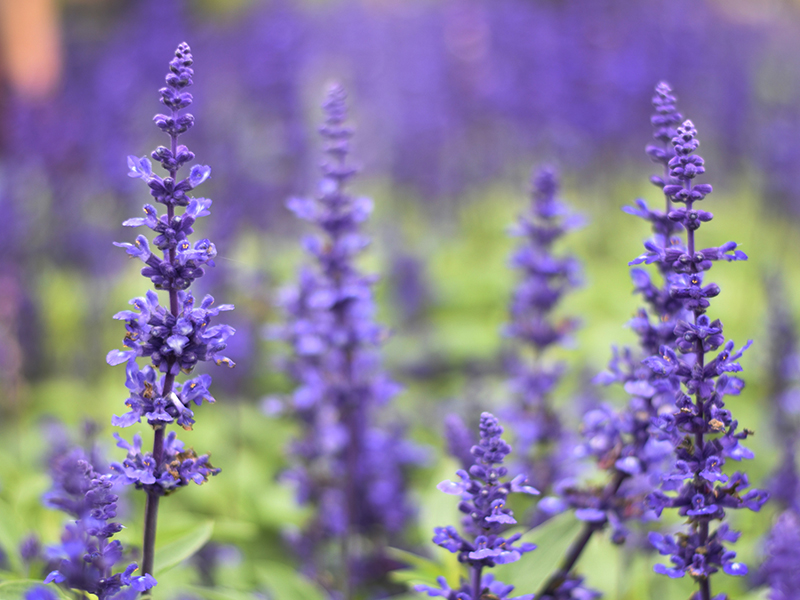
This plant is famous not only for its aesthetic appeal but also for its pleasant and soothing aroma. Lavender flowers have been valued for centuries for various uses, including aromatherapy, culinary uses, and ornamental purposes.
Lavender Meaning
Characterized by its charming and fragrant members, the lavender family holds a special place in the realm of botanical wonders. Lavender, meaning “to wash” in Latin, not only reflects the plant’s historical use in bathing but also symbolizes its cleansing and soothing properties.
Consisting of several species, such as Lavandula angustifolia, Lavandula stoechas, and Lavandula x intermedia, this family has distinctive purple flowers that emit a soothing fragrance. The meaning of lavender goes beyond its delightful aroma, as it has been valued for centuries for its medicinal and ornamental value.
Whether for decorating gardens, scenting sachets, or helping with essential oils, the lavender family is one of the most popular of the lavender family, known for its beauty and calming atmosphere.
Lavender Scientific Name
Lavender, scientifically known as Lavandula, is a fragrant and versatile plant from the mint family. Lavandula angustifolia, commonly known as English Lavender or True Lavender, is a well-known species within this genus. This aromatic herb is characterized by slender, narrow leaves and delicate spikes of fragrant, lavender-colored flowers.
Native to the Mediterranean region, Lavandula angustifolia is appreciated not only for its attractive appearance but also for its soothing and healing properties. The essential oil extracted from its blooms, characteristic of Lavandula angustifolia, is prized for its calming scent, often used in aromatherapy and various health practices.
Whether for decorating gardens, attracting pollinators, or helping to produce essential oils, Lavandula angustifolia has a special place among lavender lovers and medicinal plant enthusiasts.
Features of Lavender Flowers
The overall structure of a lavender flower looks like a single ring, but it is actually made up of two opposite clusters on one stem. Each of these spikes is embraced by small green leaves, a characteristic often seen in French lavender flowers. Lavender plants display a wide range of flower colors, mostly in the vibrant blue and purple spectrum.
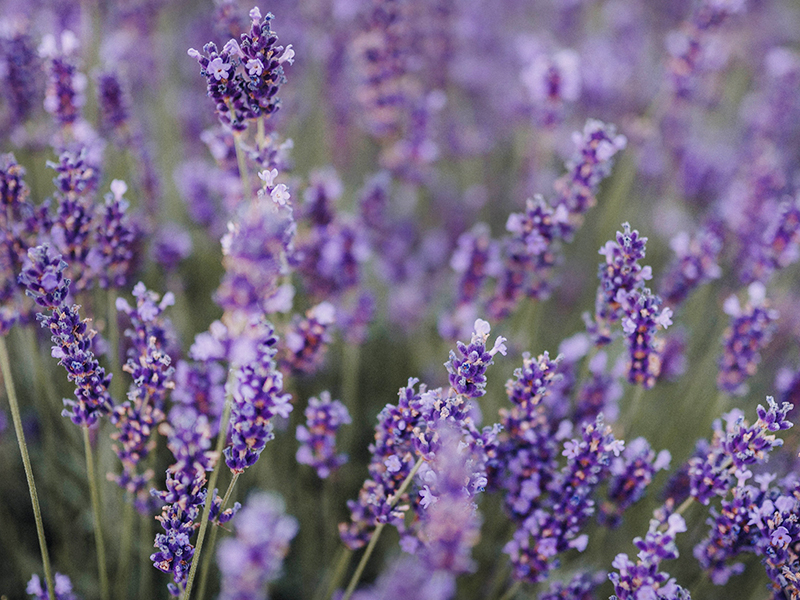
The lavender color is a characteristic feature, with different shades enriching the visual appeal of these blossoms. By looking at lavender photos, you can better understand its beautiful and charming appearance. This versatile and fragrant flower has shown its mark not only because of its attractive appearance but also because of its cultural and practical importance.
Lavender Seeds
Lavender seeds are the little powerhouses that give life to fragrant and attractive lavender plants. These small seeds, often dark in color, have the potential to grow into the iconic lavender flowers that beautify gardens and landscapes.
The process of growing lavender from seeds involves planting them in well-drained soil, exposing them to sunlight, and providing adequate water. Lavender seeds are known for their hardiness and adaptability and are suitable for different climates. Once planted, these seeds grow into sturdy plants with slender stems adorned with fragrant lavender blossoms.
Different Forms of Lavender
This medicinal plant is available in different forms, each of which is designed for specific therapeutic purposes:
Lavender Distillate
One of the popular forms of this plant in traditional medicine is lavender distillation. It is rich in antibiotics and significantly affects the treatment of diseases such as eczema, skin diseases, skin spots, acne scars, and insect bites.
Lavender Drops
Among the most common forms is lavender essential oil or drops. Lavender essential oil is readily available in the market. Whenever in need of relaxation, a few drops can be added to an air freshener, or the bottle can be sniffed, taking deep breaths for a calming effect.
Lavender Oil
Lavender oil is created by steeping lavender buds in a carrier oil (such as olive or coconut oil) for a minimum of one week. In the final product, lavender oil should constitute only 0.5 to 2 percent of the total oil content. This oil is used to treat various skin issues, contributing to skincare and overall well-being.
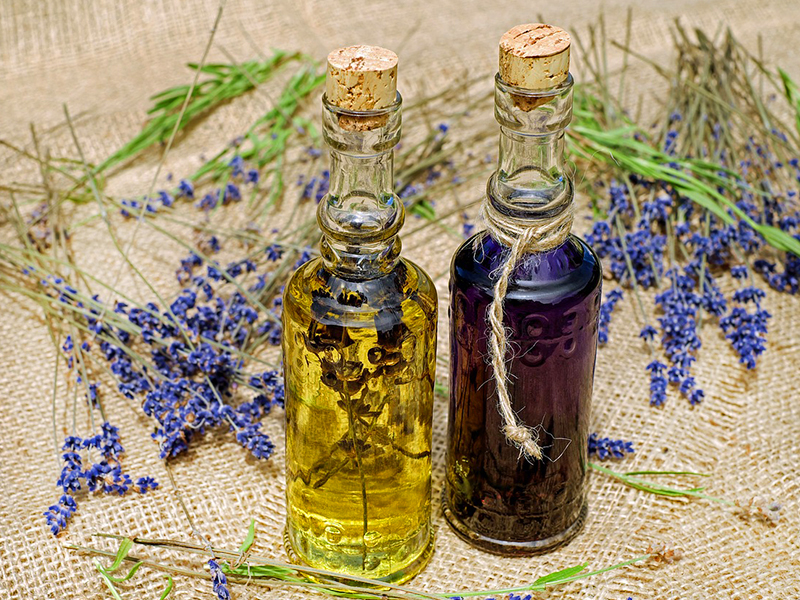
Lavender Infusion
Lavender tea or infusion also holds soothing and therapeutic properties. It is generally recommended for individuals experiencing anxiety and stress.
Lavender Powder
Lavender powder can be used to flavor cakes, biscuits, and various desserts. Additionally, it can be added to lotions, skin creams, and hair shampoos.
Lavender Ointment
If you have wounds or excessively dry skin, you can try using ointments, lotions, or creams made from this medicinal herb. These are typically crafted with denser oils (like coconut oil) or waxes (such as beeswax or soy wax). You can either purchase these creams, lotions, or ointments or create them yourself.
What Are the Possible Benefits of Lavender?
Lavender flowers offer many potential benefits, making them a popular herb with a rich history of therapeutic use. One of its most prominent benefits lies in its calming and soothing properties, which are known to reduce stress and promote relaxation. Lavender essential oil is often used in aromatherapy to reduce anxiety and increase overall well-being.
In addition, lavender flowers may help improve sleep quality, as their scent is believed to contribute to a more restful night. This herb also has antimicrobial properties that potentially aid in wound healing and skin care. Additionally, lavender is known for its versatility and is used in everything from culinary delights to beauty products.
Lavender Medicinal Uses
Known for its aromatic appeal, lavender has a variety of medicinal uses that have been known for centuries. Some of the notable properties of lavender flowers in medical applications include: relieving muscle pain, reducing stress and nervous tension, healing wounds, accelerating recovery after illness, supporting the immune system, calming effects, reducing stress, helping to treat insomnia, and acting as an antiviral and antibacterial agent.
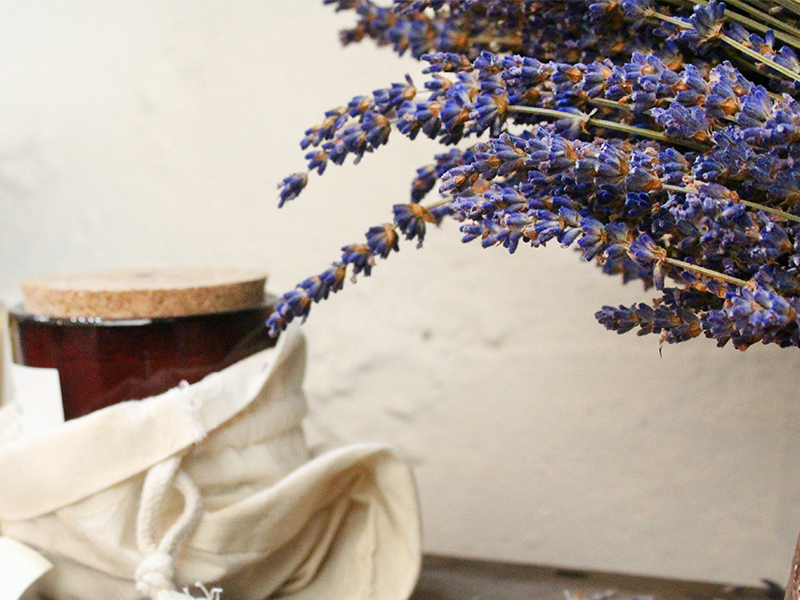
These lavender uses emphasize its versatility in promoting physical and mental health. The soothing aroma and therapeutic benefits of this plant continue to make it a valuable resource in traditional and modern medicine.
How to Make Lavender Tea
Brewing lavender tea or herbal tea is a simple process. Follow these simple steps:
1. Boil 1 cup of water.
2. Next, place 4 teaspoons of fresh lavender buds in a tea strainer.
3. Place the tea strainer with the lavender buds in a teacup.
4. Pour the boiled water over the lavender buds in the cup.
5. Allow it to steep for 10 minutes.
6. Now enjoy the lavender tea you prepared.
Interesting Facts About Lavenders
1. The word “lavender” is derived from the Latin verb “larve” meaning “wash”.
2. Over 2,500 years ago, the ancient Egyptians used lavender in the embalming process.
3. The scent of lavender has the ability to repel mice, insects, mosquitoes, and other pests from the surrounding environment.
4. Lavender nectar is used in the production of high-quality honey.
5. While many may associate lavender with shades of blue and purple, some varieties represent yellow and pink hues.
Final Word
Lavender is a versatile and lovely plant with aromatic appeal and healing properties that have made it very popular. Lavender has a rich history that dates back more than 2500 years and was used by the ancient Egyptians. Today, lavender is available in different forms, such as distillation, drops, and oil, each of which has unique uses.
Medicinal uses of lavender include its ability to reduce muscle pain and reduce stress to support the immune system, and create a sense of relaxation. Lavender tea and powder offer more ways to experience its soothing benefits.
Whether it is incorporated into skin care lotions, delicious treats, or aromatic teas, after experiencing lavender’s many uses, do not underestimate its versatility and enduring appeal.
Are you planning to travel to Iran and looking for an Iran resort? Consider Matinabad Eco-resort.

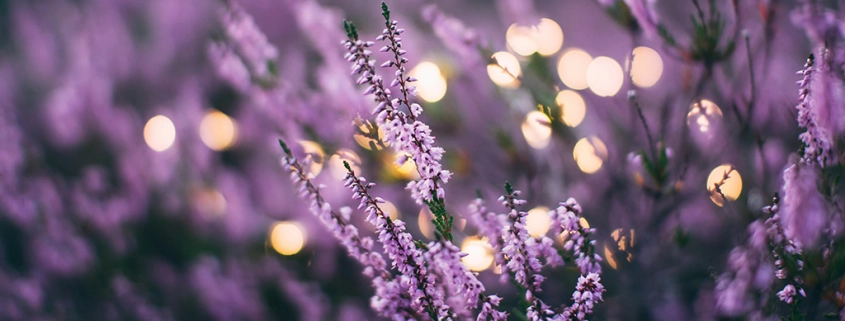



Leave a Reply
Want to join the discussion?Feel free to contribute!